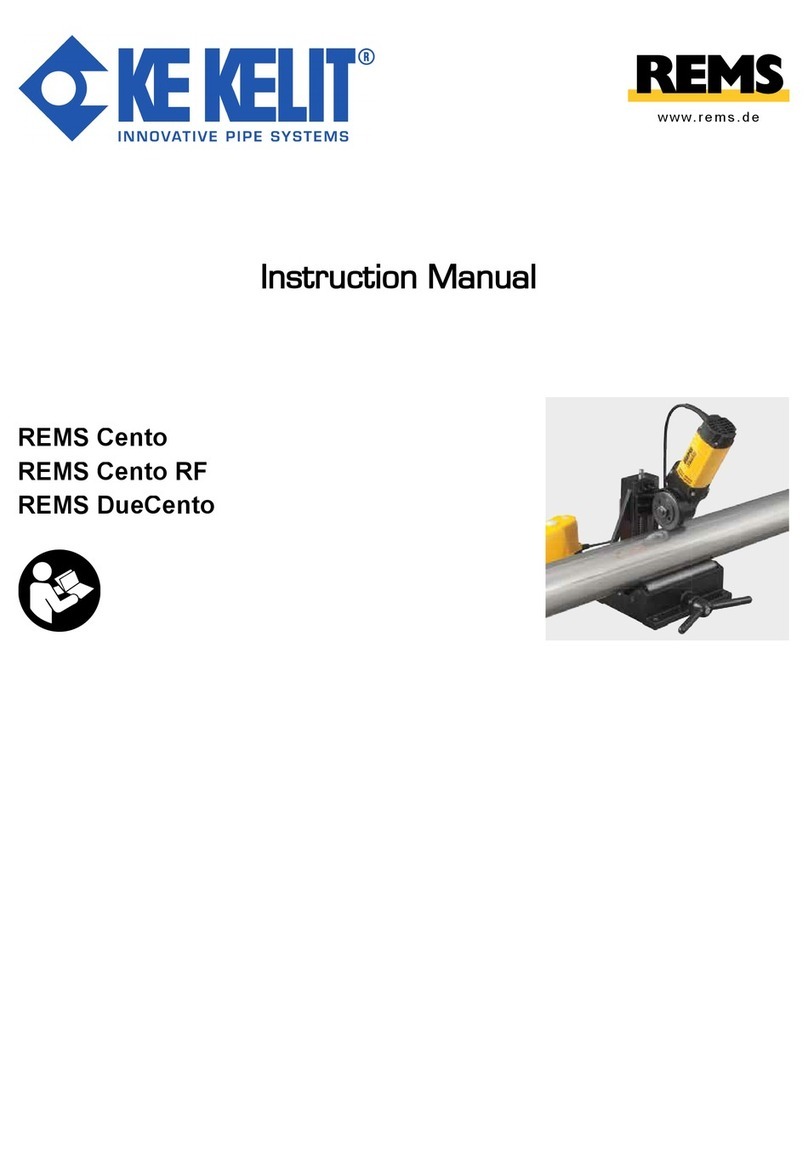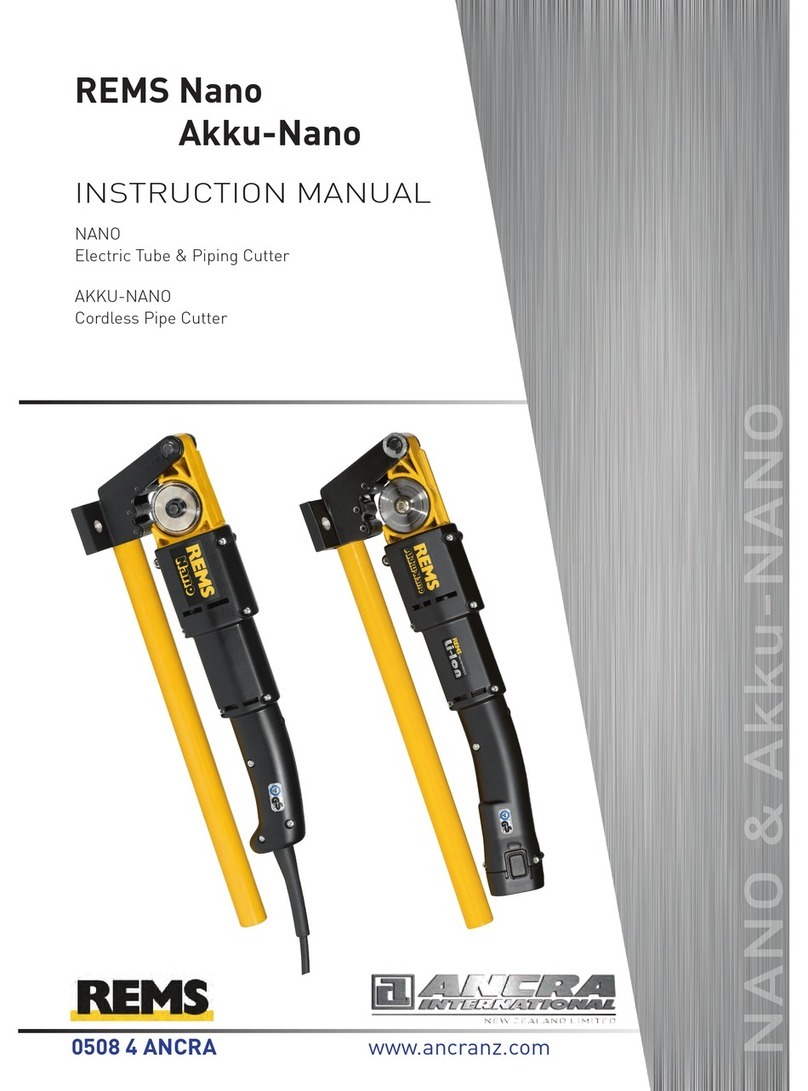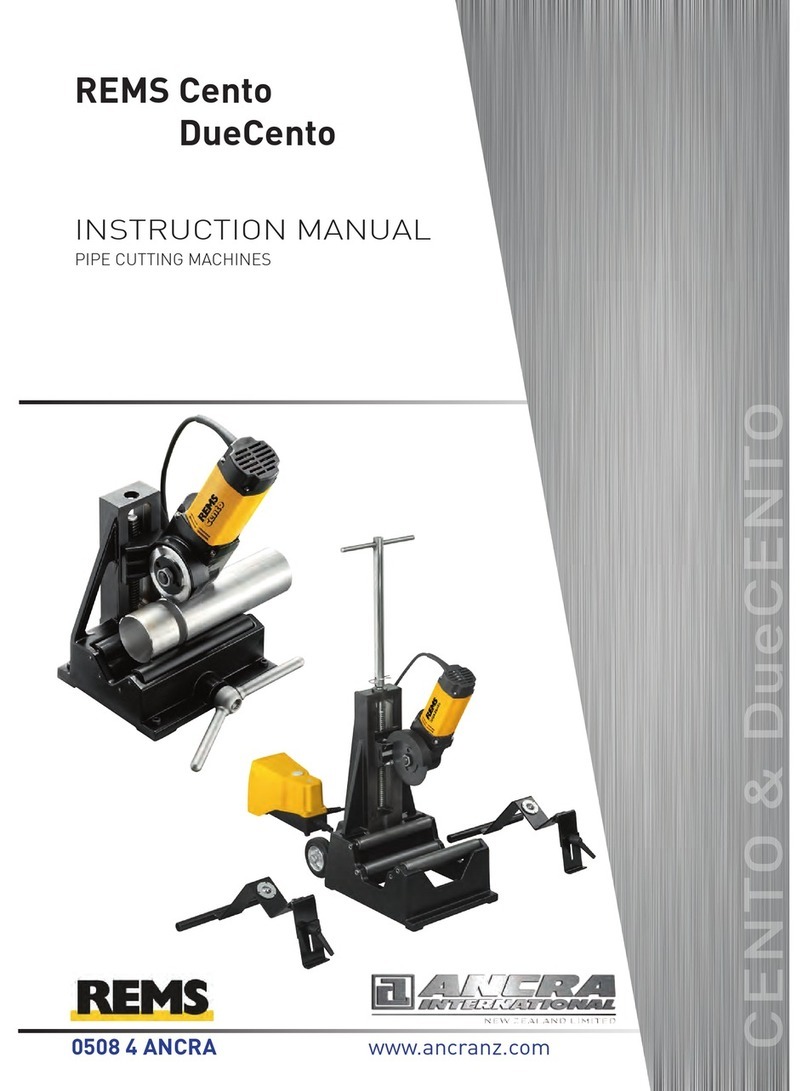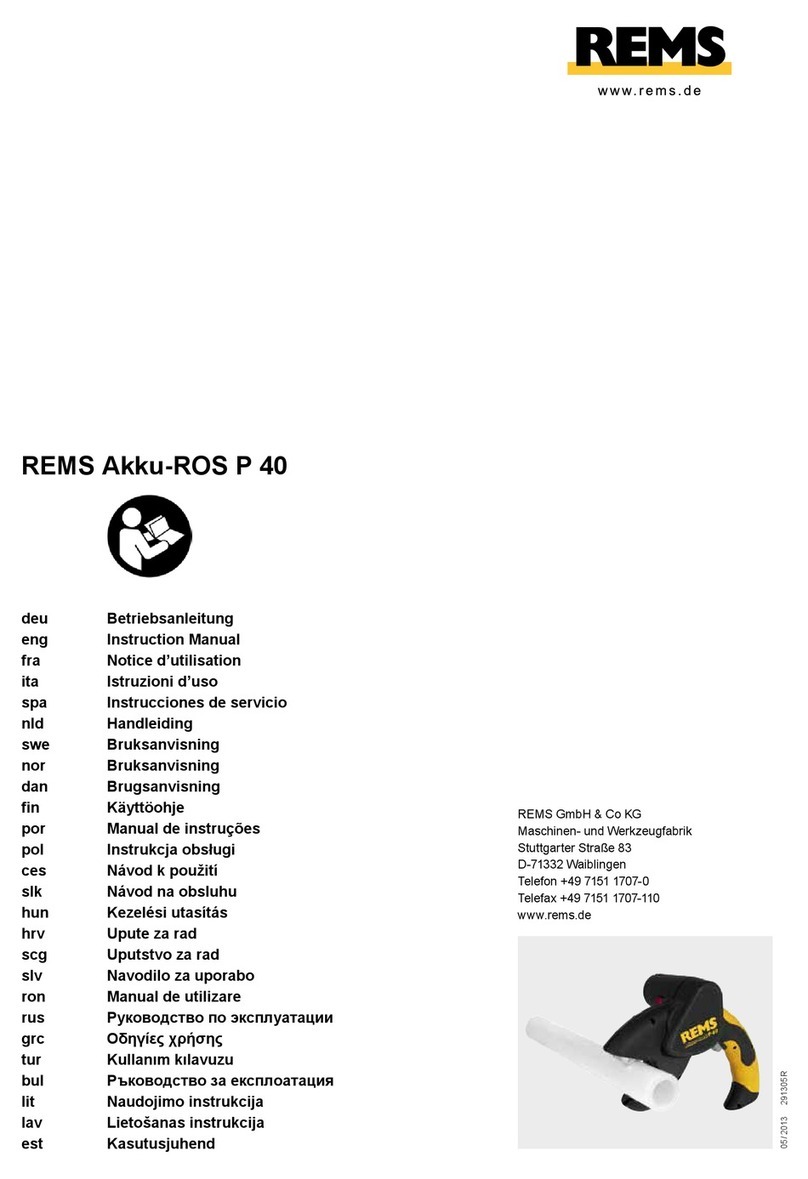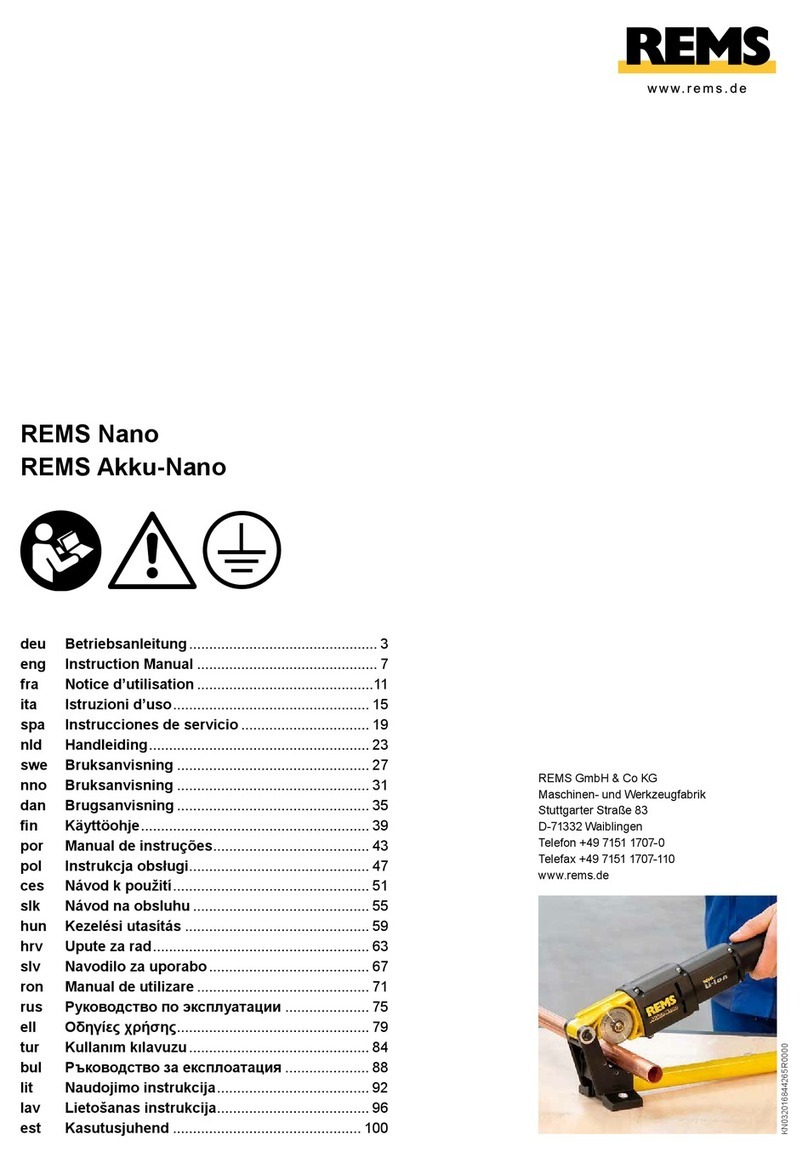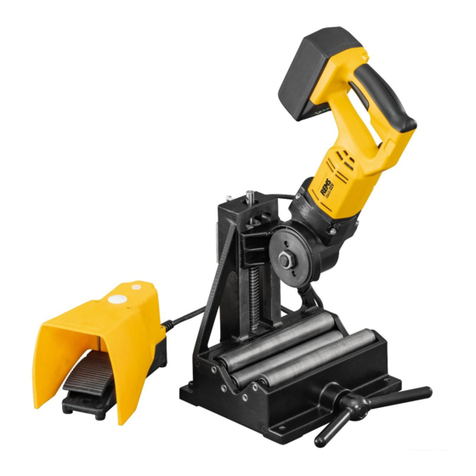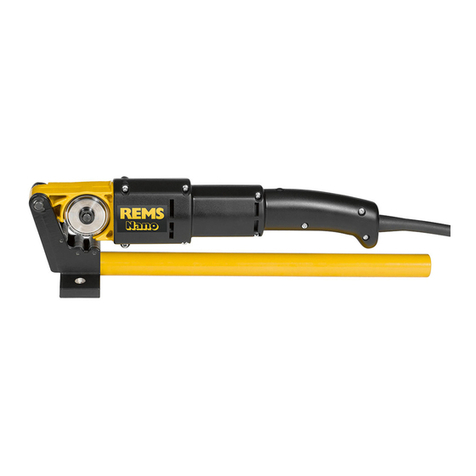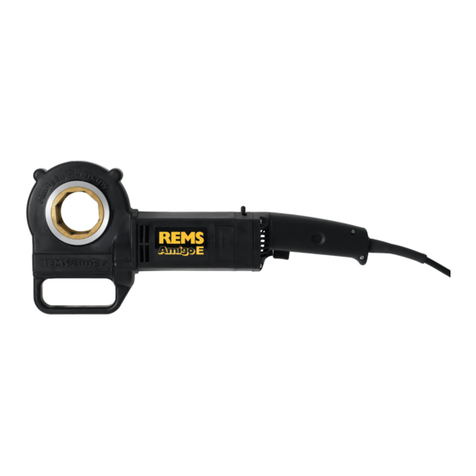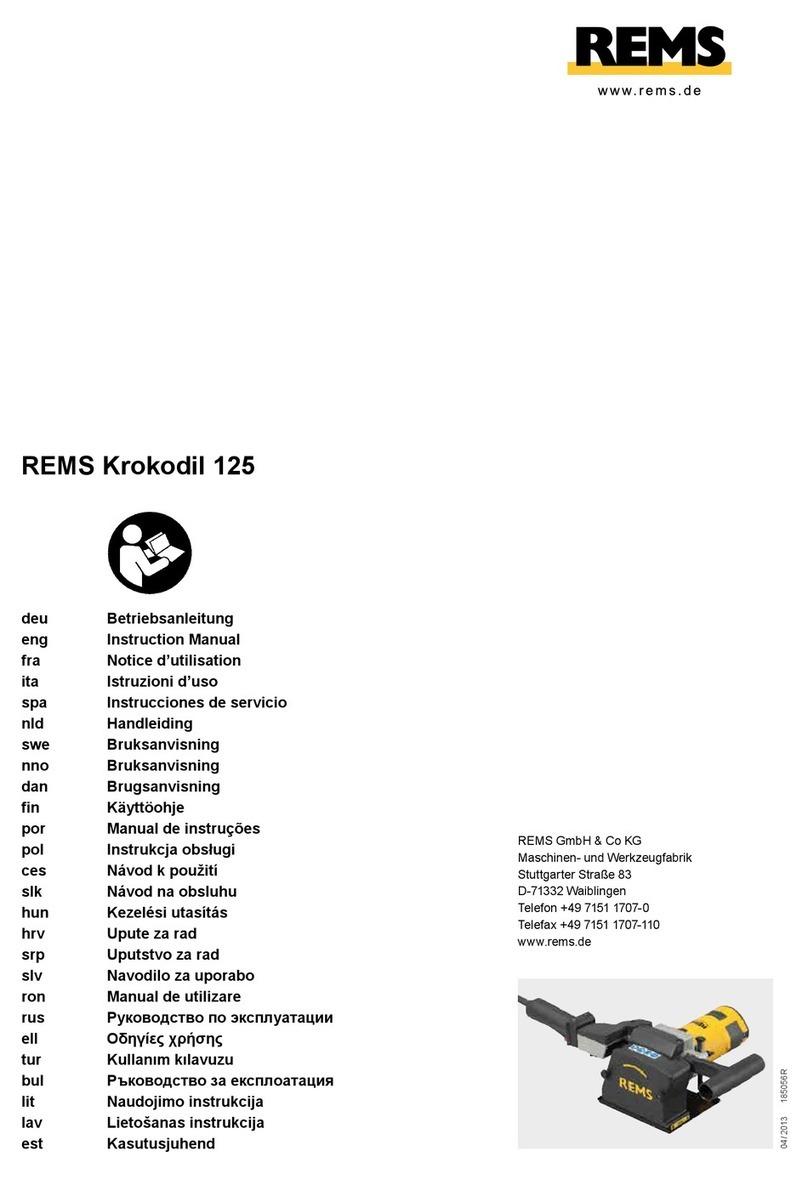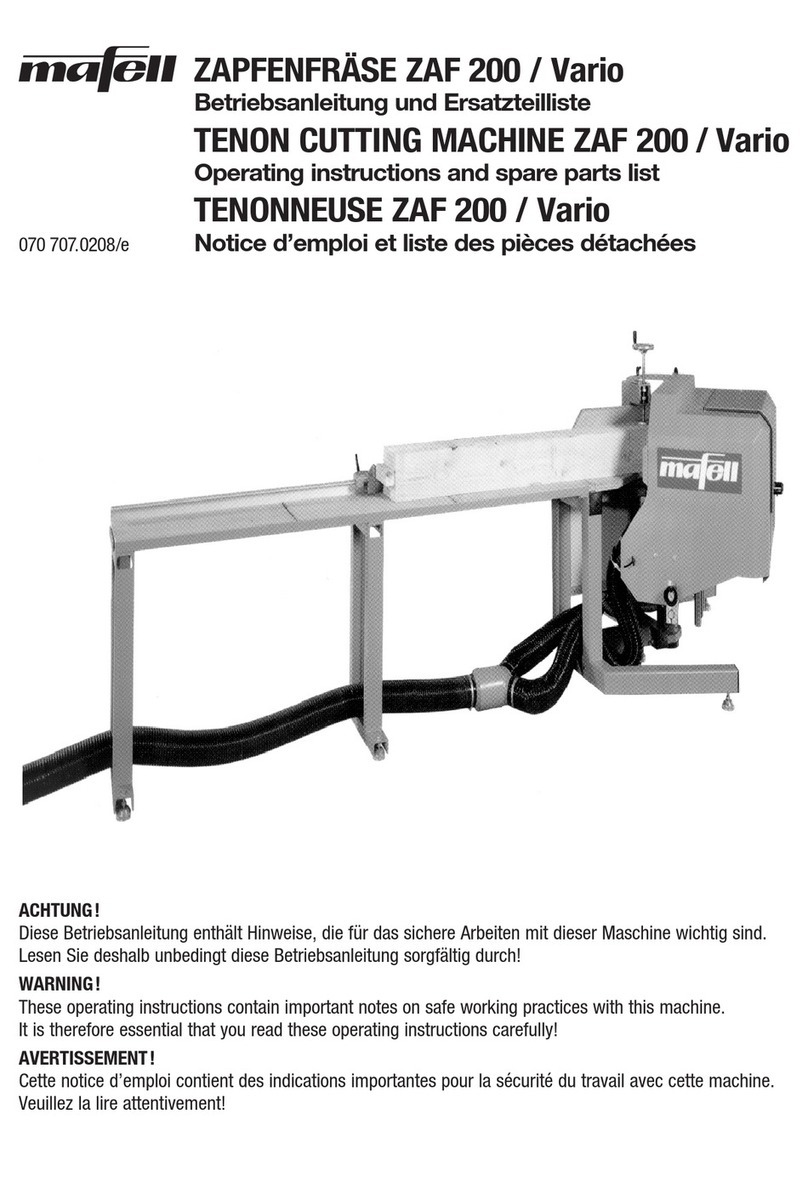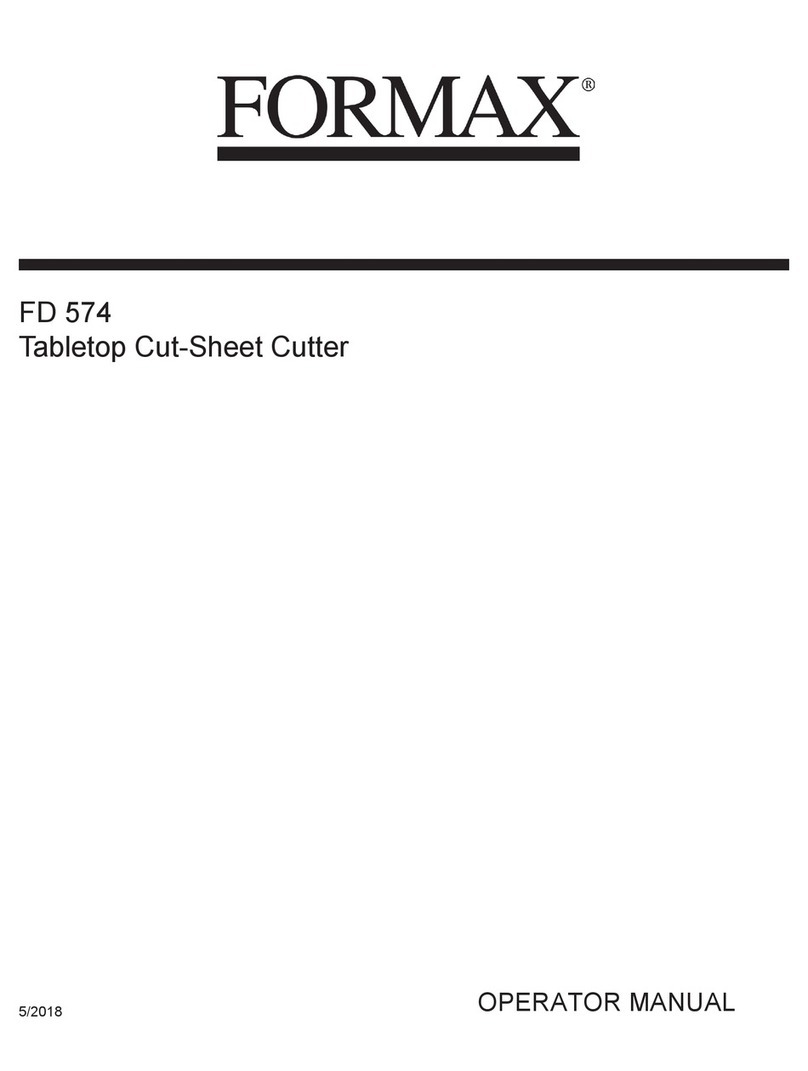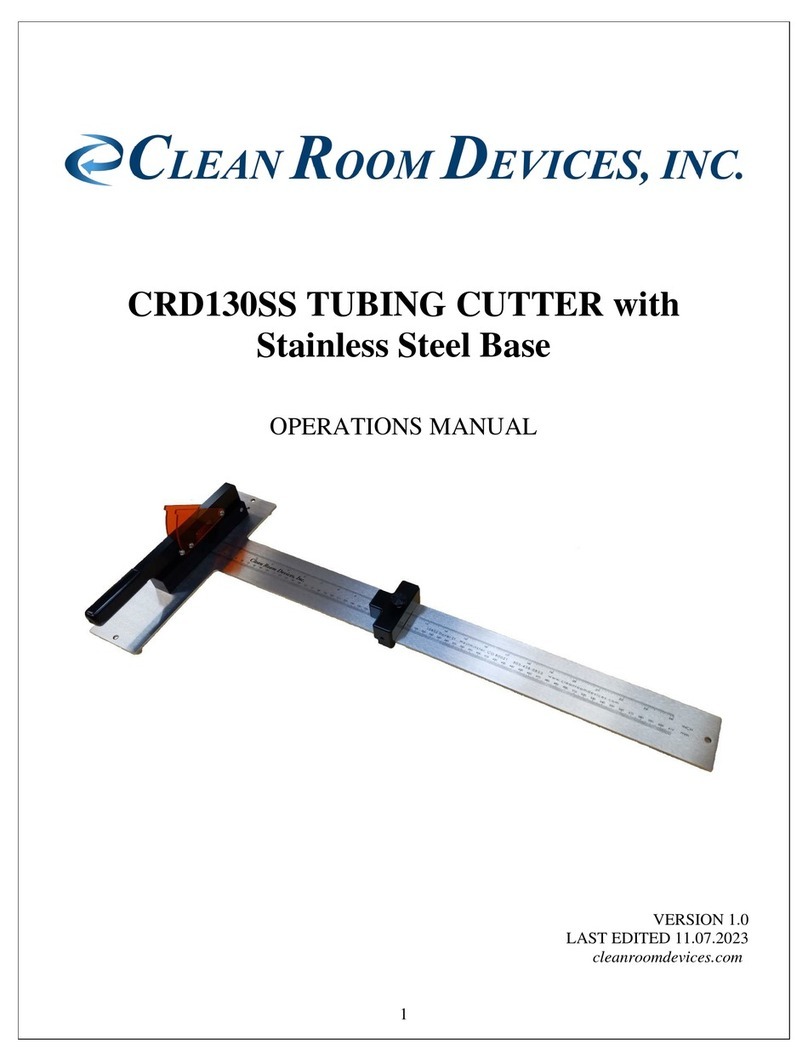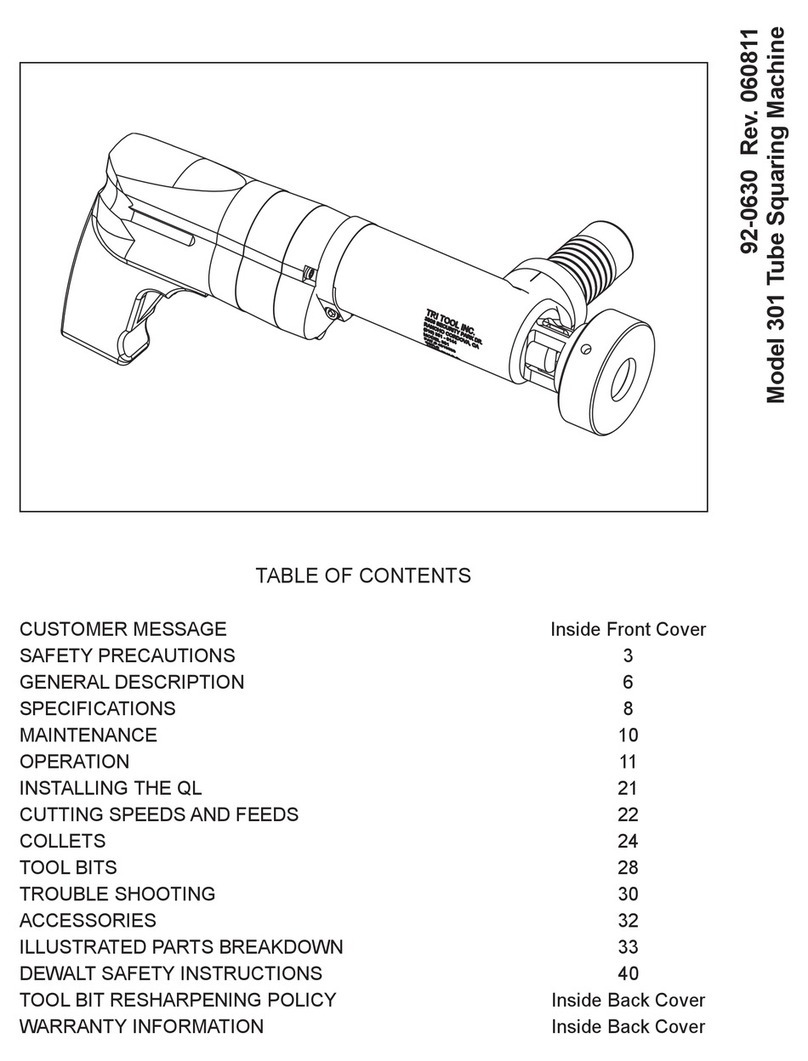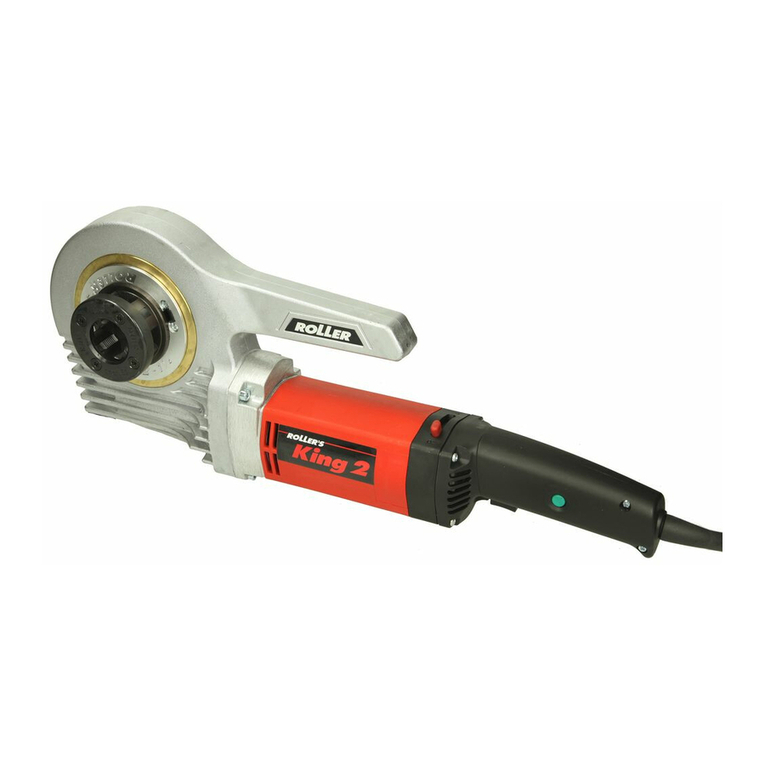
6
Translation of the Original Instruction Manual
General Safety Instructions
ad all the safety notes, instructions, illustrations and technical data which
Failure to heed the safety notes and instructions can lead to
Keep all safety notes and instructions for the future.
Only use the tool for the intended purpose and under observance of the general
safety and accident prevention rules.
Untidiness in the work area can cause accidents.
Do not use weak machines for heavy work. Do not use the
tool for a purpose for which it is not intended.
c) Check the tool for damage.
Slightly damaged parts must be checked carefully
for perfect and proper functioning before using the tool. Check whether the moving
parts work perfectly and do not jam or are damaged. All parts must be mounted
correctly and meet all conditions to ensure perfect operation of the tool. Damaged
parts must be properly repaired or changed by a recognised specialist unless
specifi ed otherwise in the operating manual.
Pay attention to what you are doing. Work sensibly.
e) Do not overload your tool.
You can work better and safer in the specifi ed work
range. Renew worn tools in time.
f) Wear suitable work clothing.
Do not wear loose clothing or jewellery as these
can get caught in moving parts. Rubber gloves and non-slip shoes are recom-
mended for working outdoors. Wear a hair net over long hair.
Wear safety glasses. Wear protective gloves.
h) Avoid abnormal body posture.
Make sure that you have a fi rm footing and
keep your balance at all times.
i) Take good care of your tools.
Keep the tools clean to work better and safer.
Follow the maintenance regulations and instructions. Keep handles dry and free
j) Take ambient infl uences into account.
Do not expose your tools to rain. Provide
k) Keep other persons away.
Do not let other persons touch your tools. Keep other
persons and especially children away from your work area.
l) Only use genuine accessories and genuine spare parts for your own safety
for the intended function of the tool.
The use of other insertion tools and
accessories can cause you injury.
m) Have your tool repaired by a qualifi ed specialist.
This tool satisfi es the perti-
nent safety regulations. Repairs may only be done by a recognised specialist or
instructed person with the use of genuine spare parts, otherwise the user could
have an accident. All unauthorised modifi cations to the tool are prohibited for
Safety instructions for oil-hydraulic pipe benders, one-
hand pipe benders, oil-hydraulic hand pipe benders
he safety notes, instructions, illustrations and technical data which
Failure to heed the safety notes and instructions can lead to
Keep all safety notes and instructions for the future.
Do not use the tool if it is damaged.
There is a danger of accident.
Do not reach between the pipe, rollers/back formers (7) and the bending
former (10) during bending.
There is a risk of injury.
Protect persons accompanying the work against the moving pipe during
There is a risk of injury.
Be careful when bending with REMS Python and REMS Hydro-Swing. These
develop a high bending force.
There is a danger of injury in case of improper
Do not lift or carry the REMS Python by the attached advance lever (11).
The advance lever is only inserted but not secured. The bender drive (4) can
come loose from the advance lever (11) and fall off.
There is a risk of injury.
Children and persons who, due to their physical, sensory or mental abilities
or lack of experience and knowledge are unable to operate the tool safely
may not use this tool without supervision or instruction by a responsible
person. Otherwise there is a risk of operating errors and injuries.
Only allow trained persons to use the tool. Apprentices may only use the
tool when they are over 16, when this is necessary for their training and
d by a trained operative.
Danger with a low degree of risk which could result in minor
injury (reversible) if not heeded.
NOTICE
Material damage, no safety note! No danger of injury.
Read the operating manual before starting
2 Upper roller holder, with laterally
adjustable roller bearing plate
15 Marking for precise bending
20 Back former support holder
22 Doglegs on several levels
Use for the intended purpose
REMS Python, REMS Swing, REMS Hydro-Swing are intended for the purpose of cold pressure bending of pipes up to 90°.
All other uses are not for the intended purpose and are therefore prohibited.
REMS Python: Oil-hydraulic pipe bender, 2 roller holders, 2 rollers, bending formers according to ordered set, operating instructions,
REMS Swing up to Ø 26 mm: One-hand pipe bender, bending formers according to ordered set, back former supports S Ø 10 – 26 mm, steel case,
REMS Swing up to Ø 32 mm: One-hand pipe bender, bending formers according to ordered set, back former supports S Ø 10 – 26 mm, back former
supports Ø 32 mm, case, operating instructions.
REMS Hydro-Swing up to Ø 26 mm: Oil-hydraulic hand pipe bender, bending formers according to ordered set, back former supports H-S Ø 10 – 26 mm,
case, operating instructions,
REMS Hydro-Swing Ø 32 mm: Oil-hydraulic hand pipe bender, bending formers according to ordered set, back former supports H-S Ø 10 – 26 mm,
back former supports Ø 32 mm, case, operating instructions.
REMS Hydro-Swing INOX Set: Oil-hydraulic hand pipe bender, aluminium bending formers Ø 15, 18, 22 mm, back former support H-S Ø 10 – 26 mm, case,
1.2. Article numbers REMS Python REMS Swing REMS Hydro-Swing REMS Hydro-Swing INOX
Drive unit 590000 153100 153500 153510
Bending formers see Fig. 3 see Fig. 6 see Fig. 8 see Fig. 8
Roller (pack of 2) 590110
Back former Ø 75 mm (pack of 2) 590111
Back former support S Ø 10–26 mm 153125
Back former support H-S Ø 10–26 mm 153501 153501
Back former support Ø 32 mm 153115 153115 153115
Device for reverse bend 153140






